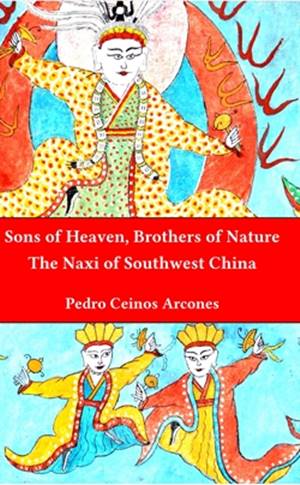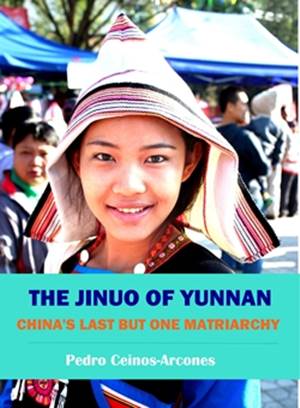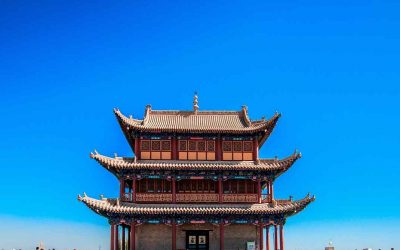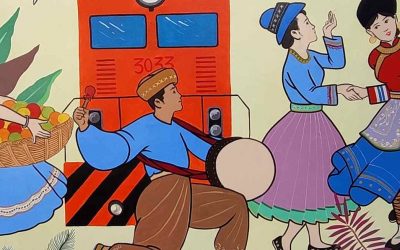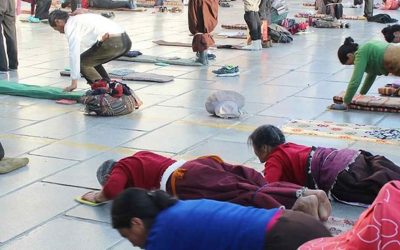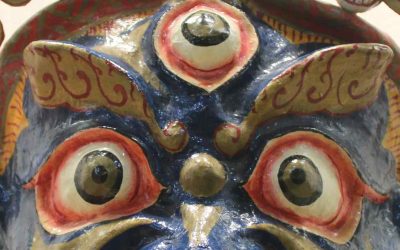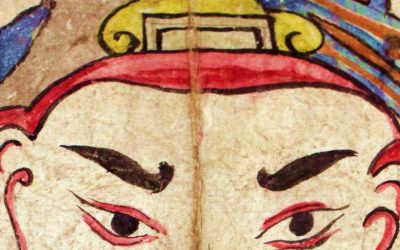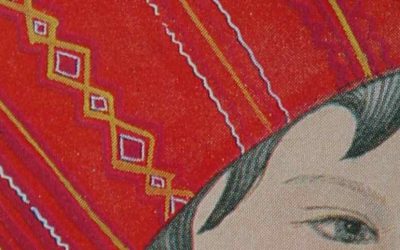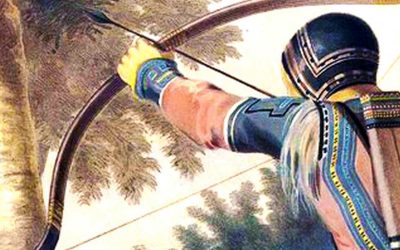Pedro Ceinos Arcones. Yu garden in Shanghai: Archetype of Chinese garden. Dancing Dragons Books. 2019.
(Excerpts from the book)
The Yu Garden is Shanghai’s main monument and the one that best summarizes the city’s history over the past few centuries. A private garden typical of southern China, it concentrates the fundamental elements of vernacular gardening in only two hectares, creating a separate space that opens the visitor’s mind and eyes to a hundred landscapes and a thousand scenes. Zigzagging paths, small walls that separate different environments, ponds that extend beyond the reach of view, pavilions that stand on rocks and water, doors with whimsical shapes, etc., every single detail makes the visitor discover a different world with every step they take. The garden is carefully designed and built as a delicate landscape that represents ancient China’s high aesthetic value and its artistic and cultural universe.
Yu Garden is one of the most outstanding private gardens in China and is at the same time a safe haven full of peace and harmony from all the hustle and bustle of modern Shanghai. Some scholars consider it «the most beautiful garden in southern China». In addition to being well known for the subtle planning and harmonious combination of mountains and ponds, its small surface area reflects the characteristics of gardens in the South, with some singularities that relate it to the imperial gardens in the north. Mr. Pan, its creator, had in mind to recreate for his parents the atmosphere of the imperial gardens of the capital, Beijing. This makes it a unique garden in China.
Yu Garden was originally a private garden, with a unique set of pavilions, rocky mountains and ponds. Since its creation, the garden has been the center of Shanghai’s cultural and social life. Its pavilions, halls, towers, bridges, ponds and artificial mountains offer more than 40 famous views or unique landscapes. There is a local saying: «He who comes to Shanghai and does not visit the Yu Garden is as if he had not come at all.» (China 1989).
The Yu Garden in Shanghai has become, through the vicissitudes of history, the universal garden, the archetype of the Chinese garden, and with it, an elegant and refined way of life linked to the aristocratic families of southern China, and to Chinese culture in general. As Kristen Chiem has shown, during the nineteenth and twentieth centuries, a powerful parallel was established between the Yu Garden and the garden in which the action of the famous novel Dream of the Red Chamber takes place, a highly popular novel in Shanghai of those years. A parallel that included not only the architectural elements and social activities common to the gardens of southern China, but even an analogy between the tragic end of the Pan family (builder of the garden then ruined) and the Jia family (protagonist of the novel that also ends in decadence). This affected the dress code and behavior of numerous ladies and courtesans of the city. The garden thus became the frame where the feminine images of society were constructed. The representations of the conventional beauties in the paintings, as well as those of the characters of popular literature, or the new heroines of urban culture were represented in environments that undoubtedly evoked a Dream of the Red Chamber embodied in the elements of the Yu Garden. As a result of this trend, an illustrated edition of the novel published in Shanghai in 1930 used the iconography of the Yu Garden to represent the garden of the novel.
On the other hand, the main components of the garden, especially the Mid-Lake Pavilion and other elements, also came to the West as a paradigm of Chinese culture. Through their incorporation into the most popular iconographic motif on porcelains exported to Europe and on those manufactured there in the Chinese style: including “a pavilion beside a willow tree, a bridge with three figures, a boat, a main teahouse, two birds, and a fence across the foreground of the garden» (Chiem 2016: 314).The popular use in different cultural environments of the main elements of the garden to portray idealized images of life in China and of a sublimated imperial tradition, responded to the its own characteristics: the splendor of its construction and the desolation of its decadence, its use as part of the City God Temple and its transformation in the commercial, cultural and social heart of Shanghai. As Shanghai became the door of China to the world, the garden represented the orientality of Shanghai, which in turn was the only one open to westerners in China.
That is why natives and foreigners are still attracted to a garden they consider a living representation of the virtues and refinement of an idealized China in the past, and why the Yu Garden is an indispensable element of Chinese Cultural Heritage.
The Yu Garden is the heart of Shanghai, being its most famous monument and the only one that identifies it in the midst of its avant-garde and modernity, with its purely Chinese character. It is the heart of the city, and the umbilical cord that keeps it united with tradition. Located in the center, if not geographical, at least cultural and social of the ancient city, the «Chinese city». It is the most important icon with which visitors and residents identify Shanghai. The Yu Garden and its surrounding monuments are the dream of the past, of an undefined cultural sophistication that materializes nevertheless with a careful harmony and shocking beauty. They are the embodiment of a city’s glorious past.
According to Chinese tradition, a visit to a garden is not a passive activity. As in any appreciation of a work of art «the visitor is expected to enter the garden not only physically, but also intellectually and emotionally» (Bryant 2016). In order to turn the visit to the garden into an emotional experience, the visitor will have to know, at least in part, the cultural environment in which the garden was built and the way in which its elements were organized, and ultimately learn the rudiments of the language spoken in the garden. A language whose basic signs we will introduce throughout this work.
More posts on Chinese culture
Cold Steel – A Sniper’s War
Cold Steel - A Sniper's War If in the West war films are a genre in their own right, in China they are an even more important genre, and that is because there is always an interest on the part of the official media to remember the two great war events that gave rise...
A Woman, a Gun and a Noodle Shop
A Woman, a Gun and a Noodle Shop Directed by Zhang Yimou: 2009. 85. Min. A Woman and a Gun and a Chinese Noodle House is a quite singular work within Zhang Yimou's filmography. His light-hearted style starts from the first scenes, in which we see the protagonist with...
Jiayuguan Pass – the Great Wall on the Silk Road
Jiayuguan Pass - the Great Wall on the Silk Road Jiayuguan Pass or Jiayu Pass, as guan means pass in Chinese is one of the most remarkable monuments on the Silk Road and one of its most popular sights. Built at the end of the Great Wall, showing the desolation of the...
Springtime in a Small Town: The best film in China’s history
Springtime in a Small Town: The best film in China's history All the rankings made in recent years, place a film, unknown to the general public, as the best film in China. It is called "Springtime in a Small Town" and was directed by Fei Mu in 1948. I had been wanting...
The Character and Function of Music in Chinese Culture
The Character and Function of Music in Chinese Culture In 1946 Bliss Wiant finished his Doctoral dissertation . The subject was “The character and function of Music in Chinese culture.” Some of his reflections are so interesting that I share with readers here some...
History of Dunhuang, crossroads of cultures on the Silk Road
History of Dunhuang, crossroads of cultures on the Silk Road Dunhuang is one of the most fascinating cities on the Silk Road, although it now appears to be asleep, in the sleep that the improvement of communications in recent centuries has brought to the great...
More posts on China ethnic groups
Ritual prostrations of Tibetan pilgrims
Ritual prostrations of Tibetan pilgrims The end of the path of any pilgrimage is a temple or mountain considered the abode of the gods. Reaching it is the culmination of the journey. At that moment the pilgrims, in spiritual bliss, pay homage to the gods in two ways:...
Mask of the Protector Palden Lhamo
Mask of the Protector Palden Lhamo Palden Lhamo is one of the main protector deities of Tibetan Buddhism. Among her many roles, she is the special protector of the city of Lhasa, the Gelugpa order of Tibetan Buddhism, and the Dalai Lamas of Tibet. She was invited to...
«Dujie» (Initiation Rite) Masks of the Yao people
"Dujie" (Initiation Rite) Masks of the Yao people Popular among the Yao people in Wenshan and Honghe Prefectures, the Dujie masks are used for the ceremonies of the boys' rites of passage. The ceremony, performed for boys that are about fourteen years...
The headdress of the Jingpo women
The headdress of the Jingpo women The clothing style of the Jingpo people is rough and bold, It is possible that it reflects that past time when they were the masters of the frontier mountains, and caravans had to pay a tax to pass through their lands. Men of the...
Pictographic writing among the Evenki
Pictographic writing among the Evenki In Chi Zijian’s novel The Last Quarter of the Moon (English translation by Bruce Humes) there is a short story describing the creation of pictographs to write the Evenki language. “Shiban had two great loves: creating Evenki...
The Flowery Miao in Zhaotong
The Flowery Miao in Zhaotong As depicted by E. G. KEMP in The Face of China. New York. 1909. The prefectural town of Zhaotong was reached after passing through a dull plain, across which a piercing wind was blowing, which is characteristic of this district. It is an...


